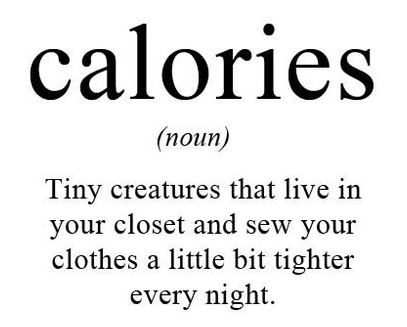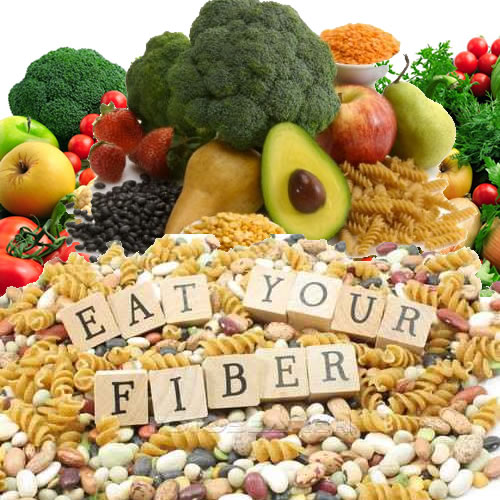
Weight loss is a matter of calorie balance. That’s it. Pure and simple. Sorry, there’s no magic trick – no pills, no electro-pulsing ab belts, no secret set-rep schemes that will get you super shredded – if you want to see the number on the scale go down, then you need to consume less calories than you expend. Unfortunately, “fitness industry” marketing and advertising will always have you believe something contrary – take this pill, eat these magical beans, check out this super secret workout that Jimmy Universe uses win the Mr. X competition (why is he sharing it?) – all for only $99.99. Look, if it were that simple, all of our problems would be solved – obesity wouldn’t be an issue and everyone would look phenomenal.
This is not the case. Obesity and all of it’s various comorbidities aren’t slowing down, and the search for that “magic pill” is more rampant than ever. Since we’ve already established that our aforementioned panacea doesn’t exist, let’s establish a handful of starting points for weight loss. Exercise should be a given – in a perfect world, we’re all working out 4-5 times a week for 40 minutes to an hour a day. If you aren’t already in that neck of the woods, start pushing towards it. Move your body, sweat, lift some weights, and make it a habit. Nutrition, on the other hand, tends to be a little trickier. It’s my idea that this is because a lot of the issues people display with regard to nutrition are a little deeper seeded than those concerning exercise – that is, nutritional behaviors tend to be harder to change or break than exercise behaviors. The least we can do is to find a few simple starting points and work from there. Without further ado, let’s dive on into some tips for cutting calories today!
1) Stop drinking your calories

Sounds simple enough, right? Sugar-sweetened beverages like full-calorie sodas, sweet tea, energy drinks, and alcohol are absolute diet saboteurs. If you’re looking to make things more tangible, find out how many calories are in an average serving (usually 8-12oz of beverage) and multiply that by your average daily servings of a calorie filled beverage. This has worked as motivation for plenty of my clients – one female client of mine lost a small amount of weight in our first couple of months training together, and things weren’t quite adding up as to why she wasn’t losing more. I asked her where she felt like she could improve as far as her nutrition went, “Well, maybe I could not drink so much sweet tea” she says. “How much sweet tea are you drinking daily?” “Oh just like one, maybe two 44 oz fountain cups…” My head nearly exploded! For some reference, 44oz of sweet tea contains somewhere north of 125g of straight sugar! That’s 500 calories (or roughly 20-25% of the daily intake I’d prescribed for her)! Calculate that out over a week and end up with 3000 calories. Same goes for booze; sure, there’s no problem with an occasional beer in the evening – but when I recently had a client confess to 3 Coronas an evening 5 nights a week, we came up with roughly another FULL DAY of his caloric intake. Not only does consuming your calories in liquid form lend minimal value to your nutritional intake, it also really screws with your body’s ability to monitor satiety, leaving you feeling hungrier despite having consumed an immense amount of calories!
2) Consume more protein
Monitoring protein intake is going to be a key portion of gaining strength and losing weight. But why? Not only does protein have an increased “thermic effect of food” – it requires more calories to digest a gram of protein than either of the other major macronutrients. Therefore, by eating more protein, you will more easily be at a caloric deficit (required to lose weight). Protein has also been shown to improve satiety. This means that, if you consume 200 calories of protein, in comparison to 200 calories of carbohydrates, the protein will leave you feeling fuller for longer. Last but not least, protein aids in the process of muscle protein synthesis – the process of your muscles recovering post-workout, building more muscle and helping to burn more fat.
How much protein? is usually the follow-up question when I ask my clients to increase their protein intake – and the answer is, truly “It depends” I generally use either fat-free mass or goal weight as starting points for computing my clients’ protein goals – anywhere between 0.7 and 1.2 grams of protein per pound of body weight. For individuals needing to lose weight, I’ll generally compute on the higher side of the equation; for those who already have an athletic build I’ll compute on the lower side.
My favorite sources of protein are lean meat, fish, whey protein powder, eggs, Greek yogurt, and low-fat cheese.
3) Eat more fiber

Fiber is a variety of carbohydrate, and is often overlooked in the diet – it’s role can be quite pivotal in weight loss. Fiber slows digestion by making your stomach work harder to break down foods. This will help leave you feeling fuller longer (are we getting the recurring theme here?). Fiber generally adds a little more volume to the foods you’re consuming, which prevents you from overeating. Fibrous foods are typically soluble or insoluble, and both are important – soluble fiber absorbs water and swells up; you’ll find soluble fiber in fruits and veggies as well as oats and oatmeal. Insoluble fiber does not absorb fiber and will typically pass through your digestive system without breaking down much. Whole grain, whole wheat, and bran foods are a great source of insoluble fiber. Generally, you should be shooting for 30 grams of fiber daily. Check out nutrition labels, find out which foods you’re eating are higher in fiber!
4) Avoid eating straight out of the container
In my previous article on controlling emotional eating, I touched briefly on this strategy. Eating out of a container tends to go along with other activities like watching TV or doing computer work. This typically leads to “checking out” and mindlessly consuming. One minute you’ve sat down to watch the newest episode of The Walking Dead, and two commercial breaks in, you’ve already downed an entire bag of peanut butter filled pretzels (yes, it’s happened to me too). In order to avoid overeating, refrain from eating straight out of the container/box/bag. Most foods that come in boxes/bags/tins don’t have much place in a “good” diet in the first place, but if you must, stick to the serving size. Pre-portion these items before indulging, and stick to it. If a serving size (two, max) doesn’t leave you feeling sated, then you know you’re eating nutritionally void foods. As an aside to this tip, keep your intake limited to while sitting at the kitchen/dining room table – don’t bring food out of the kitchen, don’t eat little bits while preparing, and don’t just stand in front of the pantry door mindlessly snacking on pretzels/chips/whatever.
5) Start your meal with some “green”
If you’re dining out, most places tend to welcome you with endless trays of chips and dip (or salsa), a bottomless bread basket, or something similar. Instead of opting for these mindless foods with little nutritional value, order a salad for an appetizer. Same goes for dining at home. This will not only supply you with plenty of calorie-dense veggies, but will leave you feeling fuller once that entree comes. Most restaurant entrees tend to be over-sized, coming with huge portions, and we eat them because, well, they’re there. Now, something to be aware of here is that restaurants, in their typical fashion, tend to overdo things – your salad might come with some heavy dressing, tons of bacon, or cheese – added calories that you don’t really need! Check the menu, and if necessary choose a lower calorie dressing option, skip the cheese, and so on.
6) Explore some healthy food swaps
No matter your temptation or vice, there’s always a healthy alternative just around the corner. Lots of people enjoy sweets, and that’s just fine – where you would add sugar, add honey. Taco night? Go with a corn tortilla instead of wheat; or better yet, make lettuce wraps. Avocado makes for a great substitute where you would otherwise use mayo, and Greek yogurt works well in place of cream cheese, sour cream, or any other heavy cream. There are practically infinite options out there, and if you’re saving every little calorie you can and choosing items with less caloric value, you can make a huge difference in the long haul.
7) Do a few sets of “Push-Aways”

That is, push away the plate the next time you want a second helping (full disclosure: I shamelessly stole this joke from Dr. Brad Schoenfeld – one of my favorite authors and leaders in the fitness industry) Alright, look. By now it should be obvious that my mission as a trainer is to keep you healthy, satisfied, and happy with your dietary choices. I do not want you to starve, nor will I put you on a super low-calorie diet that will have you hating yourself, lacking energy, and not wanting to function. At the end of the day, losing weight comes down to a calorie deficit, and you cannot achieve that if you are constantly overeating. In a perfect world, you’re exercising enough that it raises your basal metabolic rate and you can fulfill a role as the “Human Garbage Disposal” and become the one among your friends who can “eat anything without gaining weight” – but, as I stated at the beginning of this article, the world we live in is far from perfect, and our bodies can be less than cooperative. That second helping you typically go for with dinner? Save it. It can wait. Restaurant bringing you bottomless breadsticks? Tell them to buzz off. Dessert menu staring you in the face, calling your name? Shut it down. Emotions can get in the way of our decision-making when it comes to our food choices, and I’ve covered that. For those among us who can make the binary decision to just FLAT. OUT. CONSUME. LESS. – do it! It’s okay to be a little hungry. It’s okay to leave a few bites on your plate – that can mean a LOT of calories when repeated over time. A lot of calories down = a lot of weight lost = a happier you. Simple math, no?
I really hope that reading this article has at the very least helped spark a bit of a jumping-off point for your nutritional changes, or given you a few more ideas on how to hack a few extra calories out of your diet. Weight loss is a highly individualized equation, one that requires a good deal of discipline and experimentation. There is no “one-size-fits-all” or “best” diet – what works for you, works for you, and if you don’t succeed at first, by all means keep trying. For those of you who may require a little bit of additional help, I’ve got you. Reach out to me via e-mail – trevor@fitbunch.net or Facebook, Instagram, or any other social media channel! I do offer meal plans in the FitBunch Shop for those of you looking to step your game up to the next level. You can enter coupon code FBFAM and save 15% on anything!
